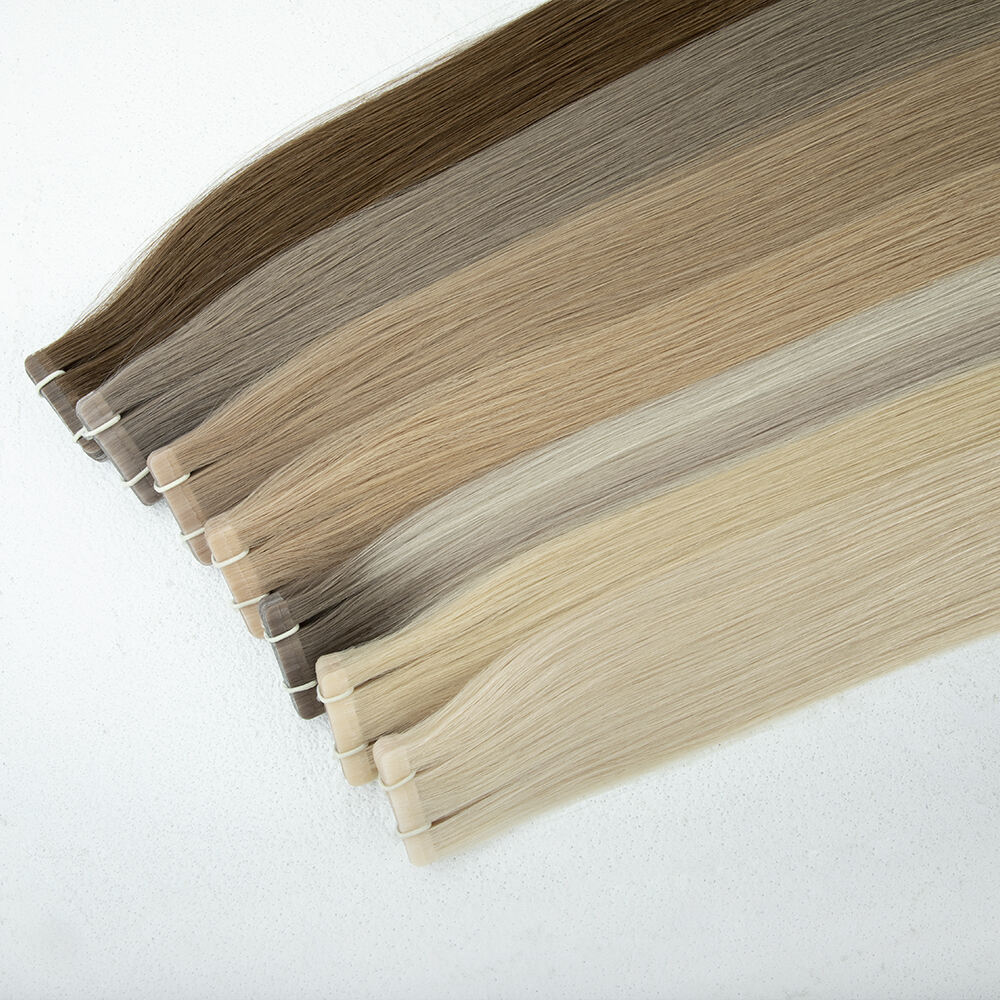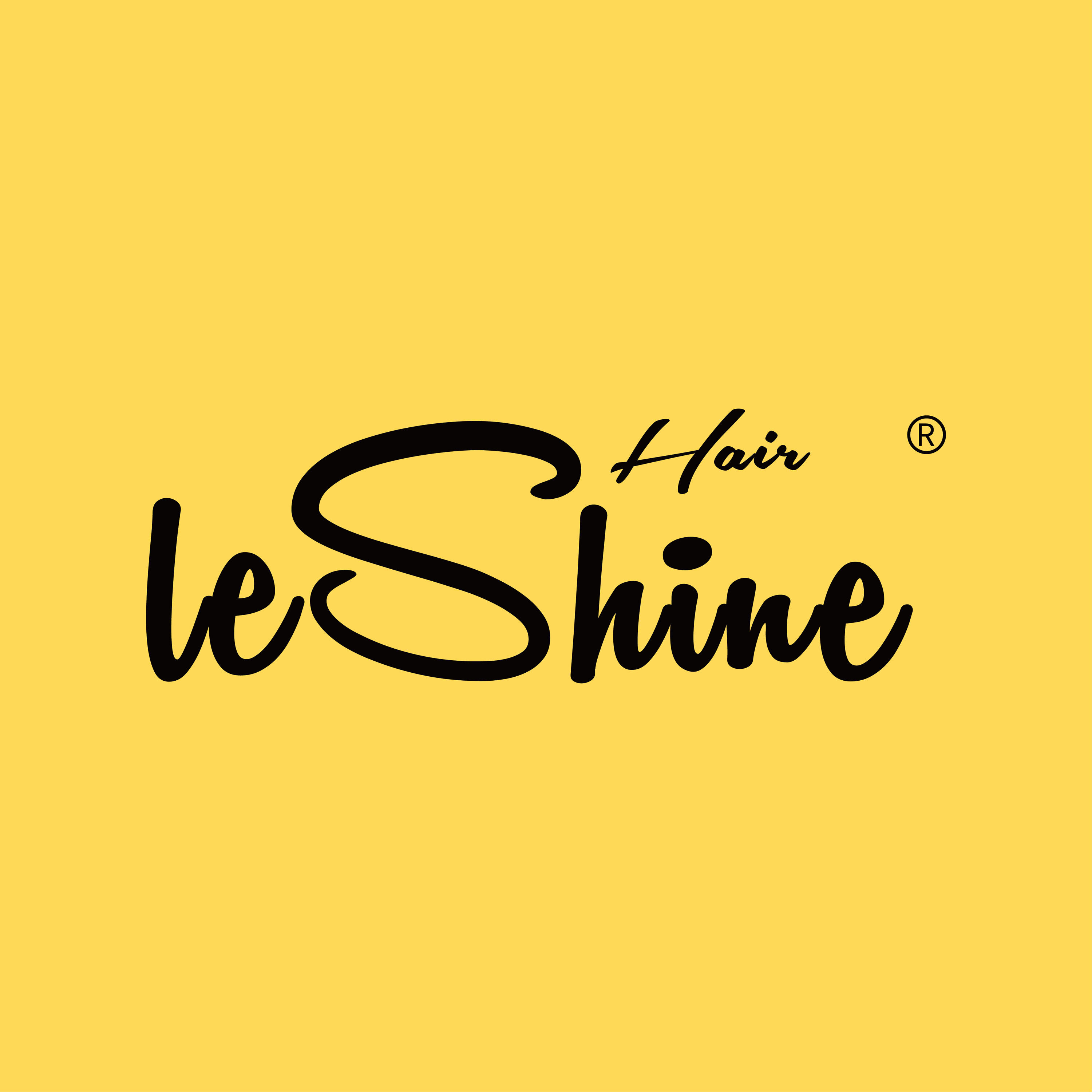
What Are Weft Hair Extensions? Understanding Types and Core Appeal
Definition and Basic Structure of Weft Hair Extensions
Weft hair extensions basically consist of horizontal strips where multiple hair strands are tied together at the top part. These can be attached to someone's own hair in different ways like sewing them on, using clips, or applying adhesives. What makes wefts different from those single strand options is how they spread out the weight across the head, which helps reduce pulling sensations on the scalp area. The way these wefts are made gives hairdressers plenty of flexibility when placing them too. They can add extra thickness here, extend length there, throw in some color highlights somewhere else all while making sure everything looks completely natural once finished.
Evolution from Traditional to Modern Weft Techniques
Early weft extensions relied on bulky, machine-sewn bases that often caused discomfort. Modern innovations like hand-tied wefts—constructed without heavy threading—and silicone-based adhesives have improved flexibility and scalp health. Today’s techniques prioritize lightweight materials and breathable designs, reducing strain by up to 40% compared to older methods.
Common Types: Hand-Tied, Machine-Made, and Hybrid Wefts
- Hand-Tied Wefts: Delicate, hand-stitched bases ideal for fine hair, offering natural movement.
- Machine-Made Wefts: Densely woven for maximum volume, best suited for thick hair types.
- Hybrid Wefts: Combine machine durability with hand-tied edges, balancing longevity and comfort.
Hybrid designs now dominate 62% of professional salon installations due to their adaptability across hair textures.
Innovations Shaping the Future of Weft Hair Extensions
Advancements in Sewing and Weaving Technologies
Laser-guided sewing machines now produce seams 50% thinner than traditional methods while delivering twice the tensile strength. These precision systems enable staggered hair placement that mimics natural growth patterns, reducing visible part lines. A leading 2024 study found these advancements cut installation time by 35% compared to conventional techniques.
Emerging Materials: Heat-Resistant Fibers and Lightweight Designs
Manufacturers are blending Remy human hair with thermoplastic polymers to create heat-resistant wefts capable of withstanding 450°F styling tools without melting—a 68% improvement over 2022 materials. Aerogel-infused bases weigh just 0.8oz per weft (40% lighter than standard), and 92% of stylists report reduced scalp tension during extended wear.
Future Trends: UV Bonding and Smart Integration in Weft Design
Experimental UV-cured adhesives bond wefts in 90 seconds under specialized lamps and allow for easier removal. Prototype “smart wefts” featuring pH-sensitive threads are being tested to signal scalp irritation via color change, though commercial availability is still 18—24 months away.
Balancing Innovation with Hair and Scalp Health
Despite material advances, 74% of extension specialists emphasize breathable designs to maintain follicular airflow. A 2023 clinical trial showed graphene-coated wefts reduced microbial growth by 83% compared to untreated extensions, addressing hygiene concerns in long-term use.
Remy Human Hair vs Synthetic Fibers: Quality, Performance, and Market Demand
Why Remy Human Hair Dominates the Premium Weft Market
According to the 2023 Styling Industry Report, around 72% of high-end weft sales come from Remy human hair because the cuticles remain aligned naturally. This alignment gives the hair that authentic look and feel, plus makes it much less likely to get tangled compared to regular stuff. Synthetic options tend to fall apart within about 8 to 12 weeks of regular use, but properly maintained Remy wefts can last through well over 150 styling sessions. Most salons report something interesting too: when clients want color matched extensions, nearly 9 out of 10 prefer Remy hair. The reason? These hairs absorb dyes better since they're actually porous, allowing for those perfect matches that don't look artificial at all.
Synthetic vs Human Hair: Cost, Realism, and Durability Compared
Synthetic wefts might seem cheaper at first glance since they're priced around 60 to 80 percent lower than real hair extensions. But when looking at how long they actually last (usually just 1 to 3 months), people end up spending about three times what they would on Remy hair that typically stays good for anywhere between six months and a year. The so-called heat resistant versions claim to handle styling tools up to 300 degrees Fahrenheit, yet they still fall short when it comes to matching the rich color variations found naturally in human hair. A recent study from early 2024 showed something interesting too: nearly two thirds of folks who tried synthetic wefts stopped using them after about three months because of that weird reflective look and the way the fibers tend to clump together over time.
Double-Drawn Wefts and Their Role in Achieving Natural Volume
The double drawn process straightens out Remy hairs based on their length and thickness, which gets rid of those annoying step-like looks that come with regular wefts. What makes this technique really stand out is how it packs about 40% more attachment points into the same space without making things heavier, so the extensions just blend right in with naturally fine or thinning hair. People who have Type 1A through 2C hair seem pretty happy with these double drawn options when it comes to adding volume, with around 92% saying they're satisfied compared to only 78% for the single drawn versions. Makes sense since most folks want something that looks natural but still gives them that extra oomph.
Application Methods: Professional Installations vs DIY Solutions
Sew-In, Clip-In, and Tape-In: Comparing Installation Techniques
There are basically three ways to apply weft hair extensions these days. The first option is sewing them into braided cornrows with special medical grade thread. This method tends to last around six to eight weeks before needing maintenance. For folks who want something they can take off whenever they please, there are clip ins that snap on with those little metal clips. They're super convenient since they come out at night or when washing hair. Then there are tape ins which stick to natural hair using adhesive strips. These usually stay put for about four to six weeks. While sew ins definitely need someone with good skills to install them properly, they do last the longest by far. Clip ins win points for being so easy to handle, whereas tape ins sit somewhere in between offering decent staying power without requiring too much effort to maintain.
Professional Salon Application vs At-Home Kits: Pros and Cons
Getting extensions installed at a salon helps keep everything aligned just right, distributes weight properly across the head, and allows for regular checks on scalp health all important stuff for avoiding hair loss from tight styles. Skilled technicians have their own special equipment such as those curved needles and little tension measuring devices that really cut down on potential damage. The home kit option definitely saves money around $40 to $60 typically but comes with risks too many people end up with bad placement issues. According to recent studies published in the Hair Care Journal last year, roughly one out of every four folks who try doing it themselves wind up losing hair sooner than expected. And let's not forget about those DIY adhesives they just don't hold up well when humidity levels rise.
Why Sew-In Wefts Are Gaining Popularity for Longevity and Blending
The market for sew-in wefts has grown quite substantially lately, with estimates suggesting around a third more people opting for this method compared to last year. What makes them so popular? Well, they sit on braided foundations which lets hair be layered smoothly without bumps or lumps. When combined with those fancy double drawn wefts that mimic how our own hair grows in different thicknesses, the results look incredibly natural. Many top stylists now use advanced feathering methods to get extensions sitting just millimeters away from clients' scalps, so there's no trace of anything artificial showing through. This is something clip-ins simply can't match. For folks who want their hair extensions to last longer while keeping their real hair healthy, properly cared for sew-ins spread out the weight nicely across several spots in the head. That means less stress on individual strands and actually works well for people who lead busy lives and need their hair to stay put through workouts and daily activities.
Care, Longevity, and Consumer Trends in the Weft Hair Extension Market
Best Practices for Maintaining and Extending Weft Lifespan
Maximize weft longevity with sulfate-free shampoos and conditioners to prevent drying, and detangle gently starting from the ends using a wide-tooth comb. Limit heat styling to 350°F (177°C) and always apply a thermal protectant. Store extensions in breathable silk bags overnight to minimize friction and tangling.
Average Longevity by Type: How Care Impacts Wear Duration
| Weft Type | Average Lifespan | Key Care Requirements |
|---|---|---|
| Hand-Tied | 6–12 months | Avoid oil-based products near bonds |
| Machine-Made | 3–6 months | Gentle washing every 10–14 days |
| Hybrid Designs | 4–8 months | Secure braiding during high activity |
Consistent maintenance can extend wear duration by up to 40%, according to stylist surveys (2024).
Growing Consumer Demand and Industry Growth Drivers
The global hair extension market is projected to reach $4.5 billion by 2030, fueled by social media trends and increased access to salon-quality solutions. Celebrities and influencers showcasing versatile styles have driven demand up by 22% since 2021.
Addressing the Paradox: High Demand vs. Scalp Health Concerns
Despite rising popularity, 34% of users experience scalp irritation due to improper installation or infrequent cleaning. Leading salons now advocate for spaced weft placements and breathable adhesives. Regular deep conditioning and avoiding tight hairstyles help prevent tension-related hair loss, aligning with industry-recommended maintenance guidelines.
FAQ
What are the main types of weft hair extensions?
The main types include hand-tied, machine-made, and hybrid wefts. Hand-tied wefts offer natural movement, machine-made are best for thick hair, and hybrid wefts balance durability and comfort.
How do modern wefts differ from traditional ones?
Modern wefts utilize lightweight materials and breathable designs, reducing scalp strain compared to bulky traditional methods.
What are the advantages of Remy human hair over synthetic fibers?
Remy human hair maintains natural cuticle alignment, preventing tangling and offering a more authentic look, while synthetic options often tangle and have a shorter lifespan.
What are the best practices for maintaining weft extensions?
Use sulfate-free products, detangle gently, limit heat styling, and store in breathable silk bags to extend the lifespan of your extensions.
Why are sew-in wefts becoming more popular?
Sew-in wefts provide longer-lasting results, natural blending, and are suitable for maintaining real hair health.
Table of Contents
- What Are Weft Hair Extensions? Understanding Types and Core Appeal
- Innovations Shaping the Future of Weft Hair Extensions
- Remy Human Hair vs Synthetic Fibers: Quality, Performance, and Market Demand
- Application Methods: Professional Installations vs DIY Solutions
-
Care, Longevity, and Consumer Trends in the Weft Hair Extension Market
- Best Practices for Maintaining and Extending Weft Lifespan
- Average Longevity by Type: How Care Impacts Wear Duration
- Growing Consumer Demand and Industry Growth Drivers
- Addressing the Paradox: High Demand vs. Scalp Health Concerns
- FAQ
- What are the main types of weft hair extensions?
- How do modern wefts differ from traditional ones?
- What are the advantages of Remy human hair over synthetic fibers?
- What are the best practices for maintaining weft extensions?
- Why are sew-in wefts becoming more popular?




